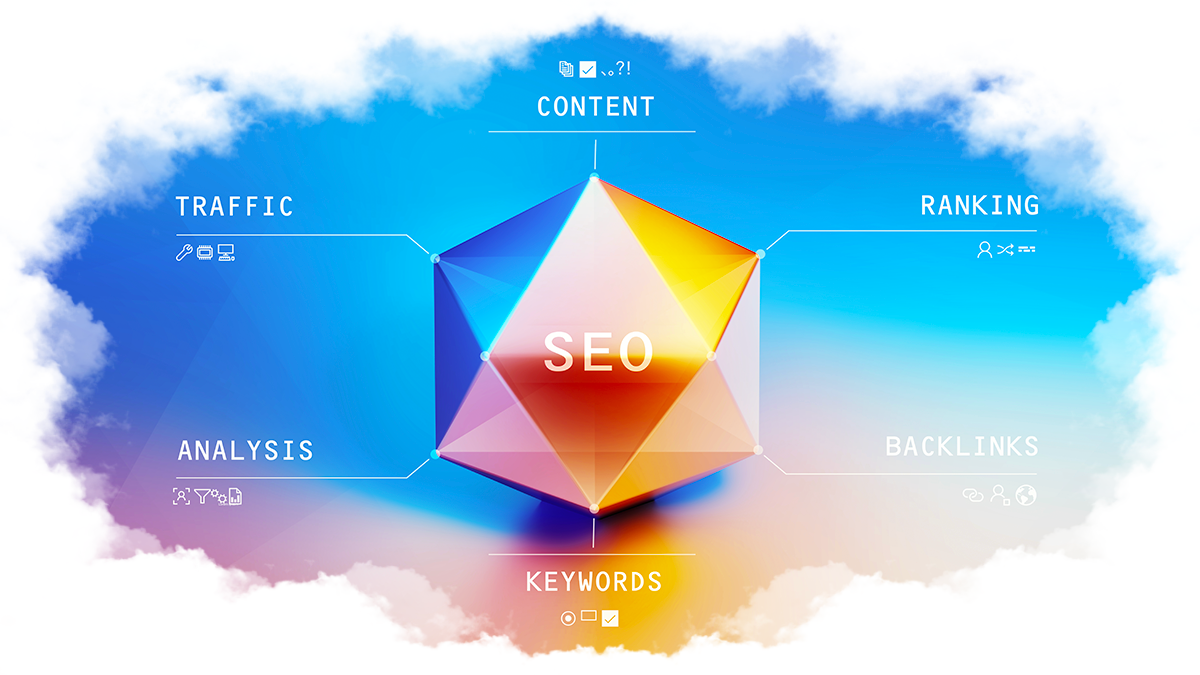5 Examples of Great Storytelling Tactics for Boring Products

Not every brand offers products as inherently sexy as Apple, Nintendo, or Gucci. A hammer is just a hammer, right? But there are still creative ways to market your not-so-exciting products with great success.
The key is to break away from the traditional mindset and use effective storytelling tactics.
Let's learn from global brands and find the recipe for a great narrative that can be used in your marketing strategy.
What Is Storytelling in Marketing?
Storytelling is the conveying of marketing messages in the form of narratives. Businesses tell stories to make their brands more recognizable and human-centered. With an effective narrative, they can keep audiences engaged, inspire them to take action, and build a loyal following.
There are many forms of storytelling - film, song, written content, drawings, etc. Small (yet essential) details such as logos can tell a powerful story as well. For instance, a Gucci logo on a bag can emphasize the owner's status quite effectively.
And the reason for that? Gucci “told a story” that evoked an impression on their audiences. That impression is stuck in their audiences' minds and now even the smallest details help to continuously deliver their brand's messaging.
Why Is Storytelling Important?
A good story not only shapes our product the way we want it but also helps us sell more. It has been proven that information presented in a story is easier to understand and retain.
According to American psychologist Jerome Bruner, facts are 22 times more likely to be remembered if they are part of a story.
We don’t hear stories like: “we wanted to make more money so we started this business”. Behind a bunch of world-famous companies, there is the story of a college dropout who realized his dreams in his parent's garage (think of the founders of Facebook, Amazon, Google, or Apple).
All these stories work because they consist of a few essential components - they are engaging, believable, and evoke emotions.
There is more to learn about writing a compelling story ⤵️
What Makes a Good Story?
Whether you are writing a play or a brand story, you must include the following components: Character(s), Conflict, Resolution, Setting, and Structure.
Let's elaborate on each component:
-
Character is the one who tells the story of your brand. It can be fictional or a real person who works in your company. The protagonist of your brand should look familiar and (surprisingly) be far from perfect. To make your character more believable, he/she should have at least some flaws. Think of Indiana Jones and his snake phobia. Before creating a character, list the company's values and beliefs to ensure your brand is authentic.
-
Conflict is the challenge you as a brand have the solution for.
-
Resolution means you present your product as a possible solution to the challenge.
-
Setting is the environment of the story, including time and mood.
-
Structure consists of the introduction, rising action, turning point (a.k.a. climax), falling action, and resolution.
Don’t know where to start your story? Follow these best practices and see how other brands implemented them.
How Can You Tell a Compelling Story About a Boring Product?
Since creating a compelling product story is a blend of art and science, all you need is a little talent and one of these proven storytelling techniques.
Educate Your Customers
The days of traditional marketing are over. Also, outbound marketing may not be completely dead, but it’s severely wounded.
Why? Because your potential customers are better informed than ever when it comes to making purchases.
They’re also overwhelmed with ads and marketing materials waiting for them at every corner of the Internet. That's why so many users have even become blind to advertising.
#DidYouKnow that in January 1996, @BillGates wrote the essay titled “Content is King”, which was published on the Microsoft website? Today, #content is indeed the best and most efficient way to create #brandawareness and build trust. Click To TweetDon’t sell; educate your potential customers first! This storytelling strategy ensures that they understand both the benefits and the value of your product. More importantly, quality product content delivers useful information in the right context at the right time.
Educational content can take many forms:
-
Printed publications
-
Whitepapers and e-books
-
Case studies
-
Infographics
-
How-to’s and tutorials
-
Q&As
-
Online courses
How to start? For example, use the summer holiday season to create a market report about a subject or trend your product is linked to directly or even indirectly. Get help from professional research & consultancy company if it’s necessary.
This may require some investment, but in return, you’ll receive unique material packed with knowledge, facts, and statistics. Publish this report in autumn and promote it intensively in Q4 through blog posts, press releases, social media updates, etc.
Example: Volvo Trucks
Volvo produced ‘how-to’ videos that answered common trucking questions. For example, how to improve truck fuel efficiency.
Introduce a Brand Hero
Michelin Man, Mr. Clean, Nesquik Bunny, Chester Cheetah – these are just a few examples of globally recognized brand heroes.
As you can see above, a brand hero may be a person, an animated character, or even a general idea, for instance, financial independence. The hero, of course, represents the brand or the product itself – all the strengths, unique selling points, and superiority over the competition.
Also, the hero guides customers by showing the problem (customer pain points) and presenting the solution (product). This journey allows customers to make the right decision.
What’s more important – this type of marketing message can be easily presented in a very approachable way, for example through a short animated story.
Example: Duracell
This humorous race story, reminiscent of classic Looney Tunes cartoons, explains why Duracell’s batteries are more durable than all the rest.
Simple, clear, and funny storytelling with the appropriate brand hero.
Bold and Edgy Storytelling
In the first chapter of Seth Godin’s classic marketing read “Purple Cow: Transform Your Business by Being Remarkable”, Godin shares a story of how delighted he was with the picturesque sight of cows grazing near the road while driving somewhere in the French countryside. However, this picturesque view became part of the landscape very quickly, and eventually, the view of the cows got… very boring.
Godin states that the same thing is happening in the world of advertising. Traditional “buy my product” marketing messages, even the solid ones, are often lost in the jungle of similar messages.
Just like with the cows mentioned a moment ago, ads, landing pages, and pop-ups have become part of the digital landscape.
They’re boring and they’re everywhere. Is it any wonder why people simply stopped paying attention to them?
Godin’s advice is simple – the only way to stand out from the crowd is to be something he calls a pink cow.
If you’re a marketing or product person, don’t repeat the same things over and over again, expecting to see completely different results.
Instead, start a new “attitude era” in the marketing department and use creative ways to explain how your product is able to help your potential customers.
Example: Squatty Potty LLC
Squatty Potty LLC, a small family business from Saint George, Utah offers a wide range of Squatty Potty® toilet stools. A delicate subject that requires cautious advertising, right? Wrong! See how Squatty Potty approaches the topic.
Controversial Advertising Done Right
Using controversy in marketing was, is, and always will be like walking on thin ice. Simply put, it’s risky, and it won’t benefit every company just because the marketing team is bold enough to try something new.
Therefore, just like any other successful marketing campaign, controversial advertising needs to be balanced and well thought out. Otherwise, you’re voluntarily heading toward a huge PR crisis.
Also, no matter how good the plan is, you need to be ready for a powerful backlash on social media. So, let the PR team prepare a few good statements before you push that red button.
Controversial advertising doesn’t aim to polarize an audience. It’s an attention-grabbing technique for stating an opinion, and brands use it to spark conversations about certain moral values.
That being said, controversial marketing is super-effective for creating brand recognition.
For example, those who agree will immediately link to your content because it supports their point of view, while those who disagree will often link to it to point out how ridiculous, wrong, or even stupid they think you are.
In both cases, you’re gaining exposure for which, under normal circumstances, you would have to pay enormous amounts of money.
Example: Nike
Nike’s 2018 ‘Believe in something’ ad featured the American quarterback Colin Kaepernick, who had caused huge controversy for not standing up to sing the national anthem in protest over the treatment of ethnic minorities and social justice issues.
Give Your Customers a Voice
If you’re having trouble describing what you do and why your product matters to your customers, why not let your customers do it for you?
#DidYouKnow that 72% of happy customers share their experience with 6 other people? Click To TweetAfter all, putting your customers at the center of your story can be the most effective way of presenting your product.
A customer’s experience with your product carries more weight than any marketing message you can come up with.
Esther Choy, chief story facilitator of Leadership Story Lab
Capturing those positive reviews can help drive online sales. And if your customers are satisfied, they’ll be more than happy to spread the word. Especially since they can use their social media.
You can either ask your customer for a case study or record your remote interview and upload it to your company's YouTube channel.
When a success story is shared, retweeted, liked, and commented on, it builds a presence and strengthens the brand's story.
Example: Salesforce
Enterprise CRM Salesforce presents high-quality customer success videos on YouTube.
Using Storytelling to Market Your Brand
You can tell brand stories every day on many different platforms. Start by telling your company's story, showing the thorny path, and how much you have accomplished so far. This will help your customers see the real people behind the company and build a connection.
You can also tell the stories of your customers and your employees to increase brand awareness and improve your employer's brand. Even a press release about a boring integration can include an introduction, a rising action, a turning point, and a resolution. Stories are everywhere, they just need to be told.
David Ogilvy, the advertising tycoon, used to say, "there are no dull products, only dull writers."
So, don’t be afraid to use creative storytelling in your marketing efforts. It worked back in the 70s and it can be effectively applied today for Google ads, content marketing, product pages, e-commerce, or social media.
While the storytelling techniques presented above might not make your product fly from the shelves a night, they can certainly change your product’s image. And that’s a great foundation for creating a compelling product experience.

DOWNLOAD FREE E-BOOK
Product Information Management in the Retail Space
Learn how retail companies are creating engaging customer experiences by improving their product data.
How to Leverage AI in Storytelling?
Storytelling techniques become even more powerful with AI in the mix. By combining creativity with advanced data analysis, AI brings new opportunities for personalisation, efficiency, and emotional connection, even in industries that might seem "boring" at first glance. All it takes to unlock the full potential is having the right tools.
With features like AI Enrich, AI Analyst, and AI Linguist integrated with the Bluestone PIM system, managing product information becomes smarter, simpler, and more impactful than ever.
AI Enrich can turn even the most ordinary product into a compelling story. For example, imagine AI crafting a narrative about a hiking backpack tailored to a shopper's adventure style in line with your brand's tone of voice. It’s not just a backpack - it’s the key to unlock their next great expedition. This approach transforms a simple product description into a relatable and memorable experience.
Interested in product information management but not sure where to start? Contact our experts to learn more about it and how a PIM solution can support your online retail business.
See AI-powered PIM in action
Talk to our experts today and discover how Bluestone PIM can address your needs.
Note: This article was originally published in July 2017 and has been updated to reflect the latest information.




